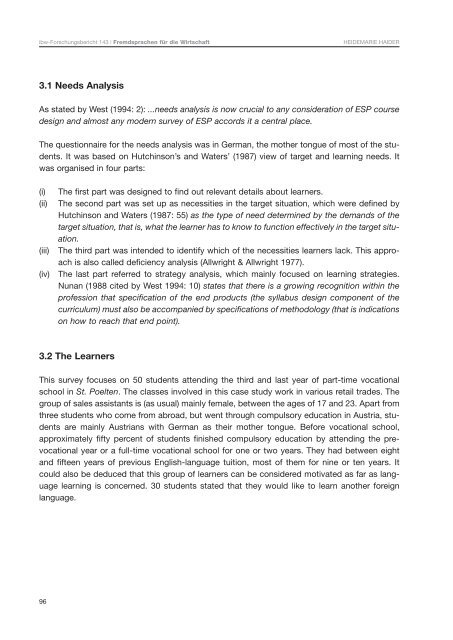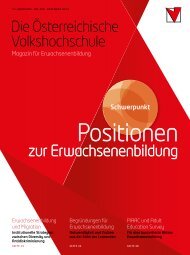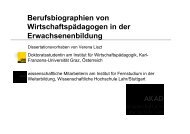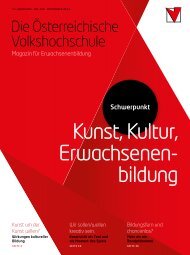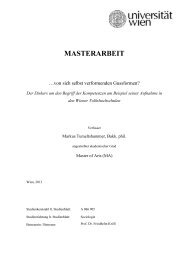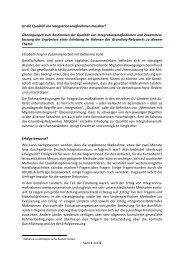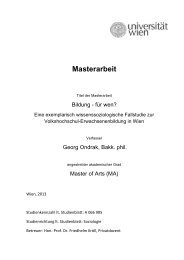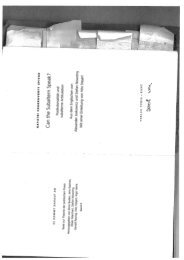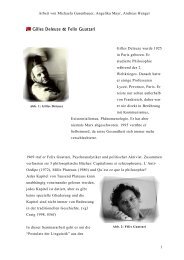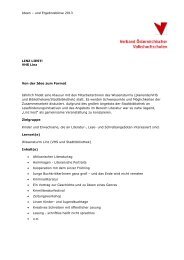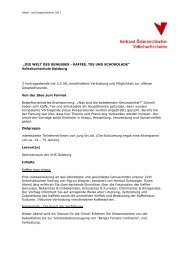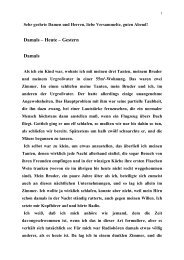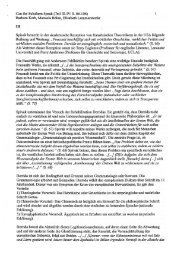Der sichere Umgang mit fremden Sprachen und Kulturen stellt heute ...
Der sichere Umgang mit fremden Sprachen und Kulturen stellt heute ...
Der sichere Umgang mit fremden Sprachen und Kulturen stellt heute ...
Erfolgreiche ePaper selbst erstellen
Machen Sie aus Ihren PDF Publikationen ein blätterbares Flipbook mit unserer einzigartigen Google optimierten e-Paper Software.
ibw-Forschungsbericht 143 | Fremdsprachen für die Wirtschaft HEIDEMARIE HAIDER<br />
3.1 Needs Analysis<br />
As stated by West (1994: 2): ...needs analysis is now crucial to any consideration of ESP course<br />
design and almost any modern survey of ESP accords it a central place.<br />
The questionnaire for the needs analysis was in German, the mother tongue of most of the students.<br />
It was based on Hutchinson’s and Waters’ (1987) view of target and learning needs. It<br />
was organised in four parts:<br />
(i) The first part was designed to find out relevant details about learners.<br />
(ii) The second part was set up as necessities in the target situation, which were defined by<br />
Hutchinson and Waters (1987: 55) as the type of need determined by the demands of the<br />
target situation, that is, what the learner has to know to function effectively in the target situation.<br />
(iii) The third part was intended to identify which of the necessities learners lack. This approach<br />
is also called deficiency analysis (Allwright & Allwright 1977).<br />
(iv) The last part referred to strategy analysis, which mainly focused on learning strategies.<br />
Nunan (1988 cited by West 1994: 10) states that there is a growing recognition within the<br />
profession that specification of the end products (the syllabus design component of the<br />
curriculum) must also be accompanied by specifications of methodology (that is indications<br />
on how to reach that end point).<br />
3.2 The Learners<br />
This survey focuses on 50 students attending the third and last year of part-time vocational<br />
school in St. Poelten. The classes involved in this case study work in various retail trades. The<br />
group of sales assistants is (as usual) mainly female, between the ages of 17 and 23. Apart from<br />
three students who come from abroad, but went through compulsory education in Austria, students<br />
are mainly Austrians with German as their mother tongue. Before vocational school,<br />
approximately fifty percent of students finished compulsory education by attending the prevocational<br />
year or a full-time vocational school for one or two years. They had between eight<br />
and fifteen years of previous English-language tuition, most of them for nine or ten years. It<br />
could also be deduced that this group of learners can be considered motivated as far as language<br />
learning is concerned. 30 students stated that they would like to learn another foreign<br />
language.<br />
96


